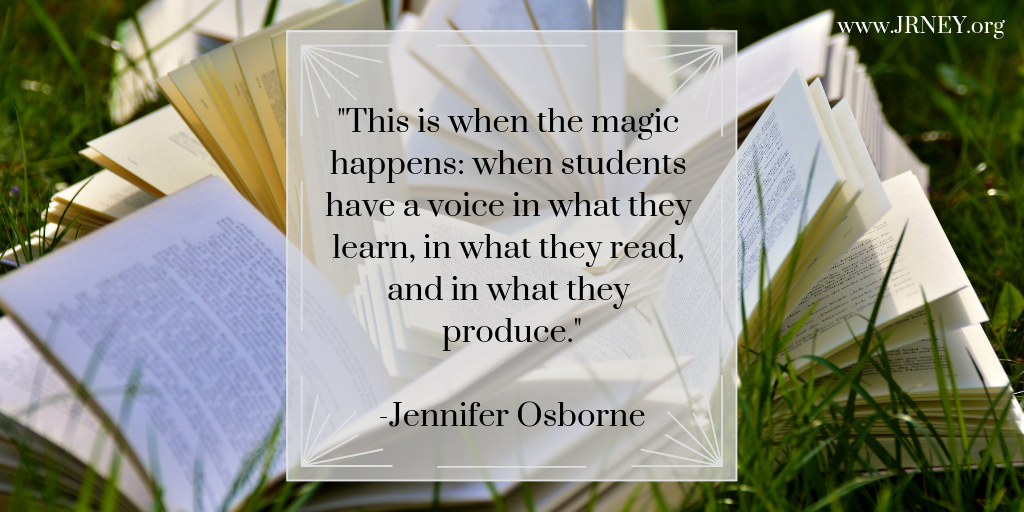When Students Have a Voice
I found Jennifer on Twitter, a happy accident, as much of my activity using this technology seems to go. I sent her a message out of the blue inviting her to write a post, and within a day she sent me this story. Talk about motivation! I’m so happy to have connected serendipitously with her, and I’m excited about the possibilities of writing collaborations in the future! Here’s her story…
The first time I realized that students have a voice was in my first year of teaching at a large and high-performing public school in South Florida. I was fresh out of college and only a few years older than the 11th-grade students I was endeavoring to teach. As an avid reader and a brand-new idealistic teacher, I was confident that I would be spending blissful days in a book club-like atmosphere discussing the deeper meaning in texts.
That is not exactly what happens when teaching high school English. By the end of the year and after forcing my students through agonizing standardized test preparation, endless vocabulary words, and teacher-selected texts from the classic canon, I was burned out and discouraged.
Why didn't my students love reading? Didn't they understand that reading can transport them to different worlds and times? Didn't they understand that they could learn anything by reading books? I was flummoxed.
This was before the time of Twitter and PLNs, so I spent time reading lesson plans posted on the internet and came across literature circles. These were the book club discussions I was craving! I proposed literature circles to my colleagues, and we were off and running.
Except, wait. My colleagues wanted to CHOOSE the books that my students were to read and discuss. But, what about SparkNotes? I knew they would just read the notes online and not actually read the book. This wasn't what I wanted.
So, I changed the parameters. I spent hours researching current young adult novels that did not have any sort of online study guide. I asked students to complete a survey indicating their favorite genres and grouped them accordingly.
I presented a list of popular young adult novels, some of which I had read but most of which I had not, and told them they could choose one to read in their groups. It was their turn to be flummoxed. They were so excited that they were able to choose. That I was asking for their opinions in what they would read and analyze for the next several weeks. And to top it all off, I told them they would create their own study guide for their novel. It was a true showcase of their abilities to analyze a text.
This is when the magic happens: when students have a voice in what they learn, in what they read, and in what they produce. Over the next several weeks, I hopped from group to group as they heatedly engaged in discourse about the characters, events, and settings of their novels. They would regale me with their latest stories and were 100% into what they were discussing.
This is why I became a teacher. This is why I became an English teacher. Reading is awesome, and when we force students to read what we want, reading loses its magic. I hated being told what to read in high school and college, but thankfully, I read for myself instead. These students had given up on reading. But after this project, they regained their enthusiasm once again.
And even if they read only one book that year, I knew they actually read it. They didn't read the SparkNotes or copy from one another. They read the books because they chose the books. And that's a powerful strategy in any classroom.
“Reading is awesome, and when we force students to read what we want, reading loses its magic.”
After several years at this school, I had had enough of standardized testing and accepted a job at my first international school. A school where I could interact with my students without the monotony of test preparation.
Now, I teach at an elite international school in Indonesia, and although it is highly competitive academically, I still find pockets of places to insert student choice. Last year, my 10th graders delivered TED-like Talks to students, teachers, and parents.
I was literally on the edge of my seat listening to my students deliver their own original ideas. Because they have them. We just have to listen.
I will continue to find ways to encourage student voice and expression. After all, it is their educational journey. I am just a facilitator and a stop along the way for the next generation.




